- Home
- Poul Anderson
Starfarers
Starfarers Read online
EARLY BIRD BOOKS
FRESH EBOOK DEALS, DELIVERED DAILY
BE THE FIRST TO KNOW—
NEW DEALS HATCH EVERY DAY!
Starfarers
Poul Anderson
TO
JIM FUNARO
WHO WAS LED MANY A CONTACT MISSION
Contents
Aboard the Starship Envoy
Prologue
Chapter 1
Chapter 2
Chapter 3
Chapter 4
Chapter 5
Chapter 6
Chapter 7
Chapter 8
Chapter 9
Chapter 10
Chapter 11
Chapter 12
Chapter 13
Chapter 14
Chapter 15
Chapter 16
Chapter 17
Chapter 18
Chapter 19
Chapter 20
Chapter 21
Chapter 22
Chapter 23
Chapter 24
Chapter 25
Chapter 26
Chapter 27
Chapter 28
Chapter 29
Chapter 30
Chapter 31
Chapter 32
Chapter 33
Chapter 34
Chapter 35
Chapter 36
Chapter 37
Chapter 38
Chapter 39
Chapter 40
Chapter 41
Chapter 42
Chapter 43
Chapter 44
Chapter 45
Chapter 46
Chapter 47
Chapter 48
Chapter 49
Chapter 50
Chapter 51
Chapter 52
Bonus Story: Ghetto
Bonus Story: The Horn of Time the Hunter
Acknowledgements
About the Author
ABOARD THE STARSHIP ENVOY
Captain: Ricardo Iriarte Nansen Aguilar
Mate and first pilot: Lajos Ruszek
Second pilot: Jean Kilbirnie
Engineer: Yu Wenji
Second engineer: Aivin Brent
Physicist: Hanny Dayan
Planetologist: Timothy Cleland
Biologist and physician: Mamphela Mokoena
Biochemist: Selim ibn Ali Zeyd
Linguist and Semantician: Ajit Nathu Sundaram
Prologue
“Look yonder.” The man pointed northeast and aloft. “That very bright star in the Milky Way. Do you know it?”
“Yes,” answered his son. “Alpha Centauri. The nearest to us. It’s two, really, and a third that is dim.”
Don Lucas Nansen Ochoa nodded, pleased. Juan was barely past his seventh birthday. “Now look up from it, a little to your right. That other brilliant one is Beta Centauri.”
“Is it close, too?”
“No, it’s far off. Almost seventy times as far, I have read. But it shines thousands of times as bright as our sun. Most of those we see are giants. Else our eyes could not find them across their distances.”
Man and boy sat their horses for a while in silence. They had drawn rein after leaving well behind them the house and its outbuildings, walled off by a cedar grove. The autumn air rested cool, still, and altogether clear. They had light enough without a moon, stars crowding heaven, galactic belt gleaming frosty. The Paraguayan plain rolled away through this dusk toward darkness, grassland broken by stands of trees and big, stump-shaped anthills. No cattle were in view, but now and then a lowing went mournfully through the early night.
“Where are they?” whispered the boy at last. Awe shivered in his words.
Don Lucas’s hand traced an arc along the constellation. “Look on upward from Beta, to your left. Epsilon—do you see it?—and, past it, Zeta. The name Zeta means it’s the sixth brightest in the Centaur. That’s where the signs are.”
“At Zeta?”
“No, as nearly as I can find out from the news, that star just happens to be in our line of sight to the things. They are actually far beyond it.”
“Are they … are they coming here?”
“Nobody knows. But none of them are headed straight toward us. And we don’t know what they are, natural or artificial or what. All the astronomers can say is that there are those fiery points of X rays moving very fast, very far away. The news programs yammer about an alien civilization, but really, it’s too soon for anybody to tell.” Don Lucas laughed a bit. “Least of all an old estanciero like me. I’m sorry, you asked me to explain what’s been on the television, and I cannot say much more than that you must be patient.”
Juan pounced. “Are you?”
“Um-m, I hope they’ll corral the truth while I’m still above ground. But you should surely live to hear it.”
“What do you think?”
Don Lucas straightened in the saddle. Juan saw his face shadowed by the wide-brimmed hat like a pair of wings against the sky. “I may be wrong, of course,” he said. “Yet I dare hope someone is faring from star to star, and someday men will.”
Suddenly overwhelmed, cold lightnings aflicker in him, the boy stared past his father, outward and outward. It was as if he felt the planet whirling beneath him, about to cast him off into endlessness; and his spirit rejoiced.
He became the grandfather of Ricardo Nansen Aguilar.
With never a sight of beautiful, changeable Earth, Farside gained a night which stars made into no more than a setting for their brilliance. And the Lunar bulk shielded it from the radio noise of the mother world; and the stable mass underfoot and the near-vacuum overhead were likewise ideal for many kinds of science. It was no wonder that some of the most gifted people alive were gathered here, in spite of monastic quarters and minimal amenities. Besides, Muramoto thought, those should improve. Already the desolation of stone and dust was redeemed by an austere elegance of domes, detectors, dishes, taut and silvery power lines.
As his car neared observatory headquarters, he glanced through its bubbletop and found the red beacon light that was Mars. People there too, nowadays. An old thrill tingled. Yes, man does not live by bread alone, nor by economics and politics. It was the vision of ships flying through heaven that got us back into space in earnest. Damn it, this time we’ll stay, and keep going!
He reached the topside turret, linked airlocks, crossed over, and descended. The corridor below felt doubly drab by contrast. However, he could move fast along it, enjoying the long, low-gravity lope. Ordinarily an officer of the United States Aerospace Force was expected to be more formal.
He had called ahead. The director awaited him in her office. She greeted him a little warily, offered him a chair, told the outer door to close, and sat down again behind her desk. For a few minutes they exchanged ritual courtesies—how were things going here, how were things back home, how had his flight from Earth been and his drive from Port Apollo?
Then Helen Lewis leaned forward and said, “Well, I’m sure your time is as valuable as mine, Colonel. Shall we get directly to business? Why have you requested this meeting, and why did you want it to be confidential?”
He knew she shared the distaste for the military that had been common among intellectuals at least since the Siberian Action. His best approach was straightforwardness. “You seemed to prefer it that way, Dr. Lewis. May I be frank? You’ve entered a request for a large expansion of your facilities. The wide-orbit interferometric system, especially, would count as high priced even in free and easy times, and you know how tight budgets are at present. I’m afraid a wish list of research projects won’t open any purses soon. After all, you’re still discovering marvelous things with the equipment on hand. “What do you really want to search for?”
Her gaze
challenged his. “Why do you, why does your service, want to know?”
“Because we’ve gotten hints that this may be something we’d go for, too.” Muramoto lifted his palm. “No, please, not with any idea of warlike application. If our guess is right, it is an area that concerns us strongly, but ‘we’ are not just a few men and women in uniform. We include civilians, scientists, and certain members of the President’s Advisory Council.”
She flushed beneath the gray hair. A fist clenched. “My God, does that clique decide everything these days?”
Muramoto had his own wistfulness about the republic that Jefferson helped found, but it wasn’t relevant today. “Myself, I hope your request will be approved. Yes, and I’d like it to be an international undertaking, as you’ve proposed. So would my superiors, partly to save American money, partly on principle. We aren’t blind chauvinists.”
Taken aback, she sat quiet for a while before she murmured, “I … presume … not.”
“But you haven’t given us reasons to fight for what you want,” he said. “If you’ll tell me what you have in mind and why it shouldn’t be publicized”—he smiled—“you’ll find we military are pretty good at keeping our mouths shut.”
Lewis reached a decision. She actually returned his smile. “The truth is nothing desperate. It’s bound to come out in due course, and certainly should. But the potential for sensationalism—” She drew breath. “You see, our latest observations lie at the limits of sensitivity available to us at present. They could be in error. An announcement, followed by a retraction, would do worse than wreck several careers. It would harm this whole institution.”
“I see. I thought so,” he replied. Intently: “You think you have found more starship trails, don’t you?”
She nodded. Although he was not surprised, his mind whirled back through time, twenty-seven years, and again he was a boy, watching the news, listening to the discussions, feeling the dream explode into reality.
Pointlike sources of hard X rays with radio tails, crisscrossing a region in the Centaur. Some have come suddenly into being as we watched, others have blanked out. Parallax measurements taken across interplanetary spans show they are five thousand light-years distant. Therefore maximum transverse motion joins with Doppler effect to show they are traveling at virtually the speed of light.
What can they be but the trails of material objects blasting through the interstellar medium?
Slowly, grudgingly, more and more physicists admit that the least fantastic hypothesis is that they indicate spacecraft.
They aren’t many, less than a hundred, and they seemed confined to a volume of perhaps two hundred parsecs’ diameter. Why that is, why they don’t range everywhere, why they haven’t come to us—those are among the mysteries. But all at once, humans around the whole Earth want us also to be in space.
Through a quickening pulsebeat, he heard Lewis’s carefully dry voice: “Lately, here, using the Maxwell superconducting telescope, we’ve found what appear to be similar phenomena elsewhere. The traces are faint, scattered, from sources far more distant than those behind Zeta Centauri. They are few, and none is as rich in objects as that region is. But there they are. Or so we think.
“To confirm, we need better instruments. That will also let us pinpoint them in the galaxy. More important, new theoretical work suggests that improved data will give clues to what the power source is. There’s the great stumbling block, you know. Where does the energy come from? I honestly believe we’re on the verge of a revolution in our understanding of the universe.
“I can show you around, introduce you to the people doing the research, let you judge for yourself before you report to your group. Would you like that?”
“I—I would,” he answered inadequately. “And—no promises, you realize, but—I expect you’ll get what you want.”
It happened that Avery Houghton launched his coup on the day that Edward Olivares recorded a television interview. Nothing had overtly begun when the physicist reached his office, but the crisis had been building up for weeks—demands, threats, demonstrations, riots—and was now unmistakably close to the breaking point. Most Americans who could stayed home, huddled over the newscasts. The amber-hued Hispanic façades of Caltech stood on a nearly deserted campus, impossibly sunlit and peaceful, while fighter jets drew contrails across the blue above them.
Olivares was stubborn about keeping promises. He arrived at the appointed hour. The camera crew was already on hand, trying hard not to act nervous. Joanne Fleury succeeded in it. She had her own professional pride.
“I fear we won’t draw much of an audience,” Olivares remarked while the crew was setting up.
“Maybe not for the first showing,” Fleury said, “though I imagine a fair number will tune in around the world regardless of our troubles here. But the rebroadcasts will pull their billions.”
“We could postpone—”
“No, if you please, sir. This is going to be a classic in science journalism. Let’s do it while we’ve got the chance.”
Planning and a sketchy run-through had gone before, and the business went more smoothly than might have been awaited. But then, it offered a brief escape from what was outside.
After the cameras had scanned the book-lined room, the battered desk, the portrait of Einstein, while Fleury gave her introduction, “—scientist, mathematical physicist, as famous as he is modest—We’ll discuss his latest and greatest achievement…” they moved in on her and him, seated in swivel chairs. A projector spread a representation of the galaxy behind them, ruddy nucleus and outcurving blue-tinged spiral arms, awesome athwart blackness. Somehow his slight frame belonged in front of it.
She gestured at the grandeur. “Alien spacecraft traveling there, almost at the speed of light,” she said. “Incredible. Perhaps you, Dr. Olivares, can explain to us why it took so long to convince so many experts that this must be the true explanation.”
“Well,” he replied, “if the X-ray sources are material objects, the radiation is due to their passage through the gas in interstellar space. That’s an extremely thin gas, a hard vacuum by our standards here on Earth, but when you move close to c—we call the velocity of unimpeded light c—then you slam into a lot of atoms every second. This energizes them, and they give back the energy in the form of hard X rays.”
For a minute, an animated diagram replaced the galaxy. Electrons tore free of atoms, fell back, spat quanta. The star images returned as Olivares finished: “To produce the level of radiation that our instruments measure, those masses must be enormous.”
“Mostly due to the speed itself, am I right?” Fleury prompted.
Olivares nodded. “Yes. Energy and mass are equivalent. As a body approaches c, its kinetic energy, therefore its mass, increases without limit. Only such particles as photons, which have no rest mass, can actually travel at that velocity. For any material object, the energy required to reach c would be infinite. This is one reason why nothing can move faster than light.
“The objects, the ships, that we’re talking about are moving so close to c that their masses must have increased by a factor of hundreds. Calculating backward, we work out that their rest masses—the masses they have at ordinary speeds—must amount to tens of thousands of tonnes. In traditional physics, this means that to boost every such vessel, you would have to annihilate millions of tonnes of matter, and an equal amount to slow down at journey’s end. That’s conversion on an astrophysical scale. Scarcely sounds practical, eh? Besides, it should produce a torrent of neutrinos; but we have no signs of any.”
Fleury picked up her cue. “Also, wouldn’t the radiation kill everybody aboard? And if you hit a speck of dust, wouldn’t that be like a nuclear warhead exploding?”
A jet snarled low above the roof. Thunder boomed through the building. Cameras shivered in men’s hands. Fleury tensed. The noise passed, and she found herself wondering whether or not to edit this moment out of the tapes.
“Go on, please,” sh
e urged.
Olivares had glanced at the galaxy, and thence at Einstein. They seemed to calm him.
“Yes,” he told the world, “There would have to be some kind of—I’m tempted to say streamlining. The new space-borne instruments have shown that this is indeed the case. Gas and dust are diverted, so that they do not encounter the object itself, but flow smoothly past it at a considerable distance.” An animation represented the currents. The ship was a bare sketch. Nobody knew what something made by non-humans might be like. “This can, in principle, be done by means of what we call magnetohydrodynamics.”
Fleury had regained her smile. “A word nearly as knotty as the problem.”
“It takes very powerful force fields,” Olivares said. “Again we meet the question of energy. Of course, the requirement is minuscule compared to what’s necessary for the speed.”
“And nobody could build a nuclear power plant to supply that.”
“No. If you did, you’d find you had built a star.”
“Then where does the energy come from?”
“The original suggestion was that it comes from the vacuum.”
“Could you explain that? It sounds like, well, Alice’s Cheshire cat.”
Olivares shrugged. “A good deal of quantum mechanics does. Let me try. Space is not a passive framework for events to happen in. It is a sea of virtual particles. They constantly go in and out of existence according to the uncertainty principle. The energy density implied is tremendous.”
“But we don’t know how to put the vacuum to work, do we?”
“Only very slightly, as in the Casimir effect. You see, the more energy you ‘borrow’ from the vacuum, the shorter the time before it must be ‘returned.’ Both these quantities, energy and time, are far too small to power a spacecraft.”
“But now you, Dr. Olivares, have shown how it can be done,” Fleury said softly.
He shook his head. “Not by myself. I simply pursued some speculations that go back to the last century. And then the new information started to come in from the new instruments.”
Fleury gestured. The galaxy gave way to the observatory on Lunar Farside. After a few seconds the scene swept across millions of kilometers to the devices in their huge orbits. Representations of laser beams quivered between them and back toward the Moon, bearing data. An antenna pointed at a constellation. Briefly, the outlines of a centaur stood limned amidst those stars. It vanished, and a telescopic view expanded. It zoomed past a globular cluster of suns, on toward the one called Zeta, and on and on beyond. Tiny fireballs twinkled into existence, crawled across the deep, and died back down into the darkness while fresh ones appeared. “The bow waves of the argosies,” Fleury intoned.

 Security
Security The Valor of Cappen Varra
The Valor of Cappen Varra The Sensitive Man
The Sensitive Man Virgin Planet
Virgin Planet To Build a World
To Build a World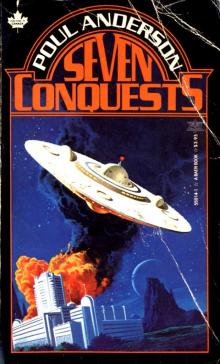 Seven Conquests
Seven Conquests Mayday Orbit
Mayday Orbit Innocent at Large
Innocent at Large Winners!
Winners! Mother of Kings
Mother of Kings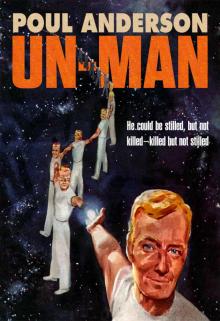 Un-Man
Un-Man War of the Gods
War of the Gods Genesis
Genesis Industrial Revolution
Industrial Revolution The High Ones and Other Stories
The High Ones and Other Stories The Chapter Ends
The Chapter Ends Flandry of Terra
Flandry of Terra Starfarers
Starfarers A World Named Cleopatra
A World Named Cleopatra Operation Chaos
Operation Chaos![Harvest of Stars - [Harvest of Stars 01] Read online](http://i1.bookreadfree.com/i/03/17/harvest_of_stars_-_harvest_of_stars_01_preview.jpg) Harvest of Stars - [Harvest of Stars 01]
Harvest of Stars - [Harvest of Stars 01] The Rebel Worlds
The Rebel Worlds Poul Anderson's Planet Stories
Poul Anderson's Planet Stories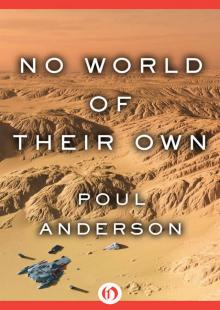 No World of Their Own
No World of Their Own The Merman's Children
The Merman's Children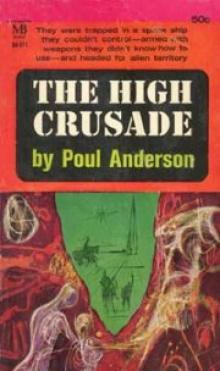 The High Crusade
The High Crusade The Stars Are Also Fire
The Stars Are Also Fire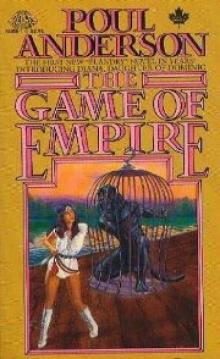 The Game of Empire df-9
The Game of Empire df-9 The Sorrow of Odin the Goth tp-7
The Sorrow of Odin the Goth tp-7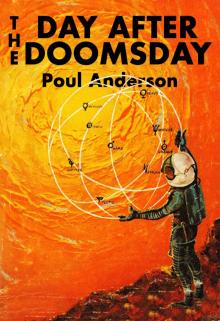 The Day After Doomsday
The Day After Doomsday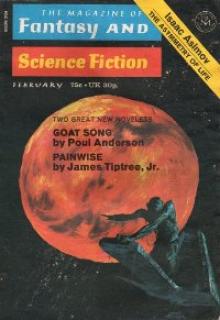 Goat Song
Goat Song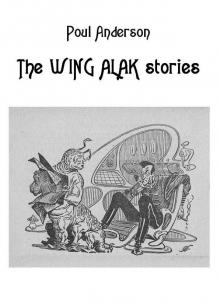 The Wing Alak Stories
The Wing Alak Stories Conan the Rebel
Conan the Rebel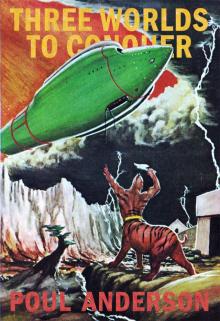 Three Worlds to Conquer
Three Worlds to Conquer Iron mw-1
Iron mw-1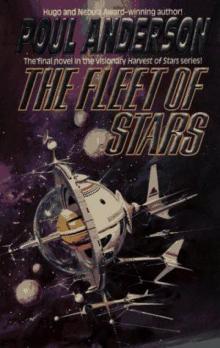 The Fleet of Stars
The Fleet of Stars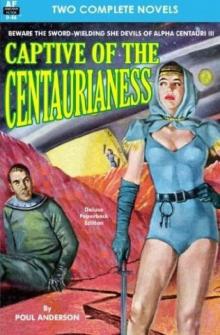 Captive of the Centaurianess
Captive of the Centaurianess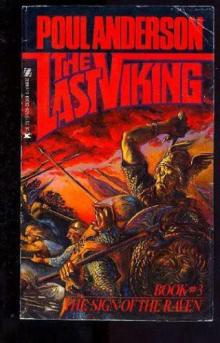 The Sign of the Raven
The Sign of the Raven The Boat of a Million Years
The Boat of a Million Years New America
New America Satan's World
Satan's World Gallicenae
Gallicenae A Midsummer Tempest
A Midsummer Tempest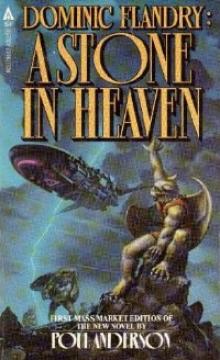 A Stone in Heaven
A Stone in Heaven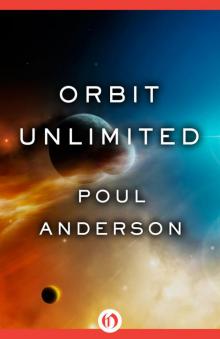 Orbit Unlimited
Orbit Unlimited The Corkscrew of Space
The Corkscrew of Space TLV - 02 - The Road of the Sea Horse
TLV - 02 - The Road of the Sea Horse Ensign Flandry df-1
Ensign Flandry df-1 Young Flandry
Young Flandry The Broken Sword
The Broken Sword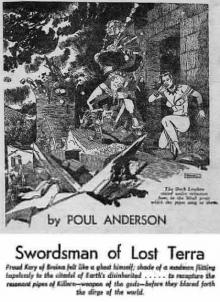 Swordsman of Lost Terra
Swordsman of Lost Terra Orion Shall Rise
Orion Shall Rise A Knight of Ghosts and Shadows df-7
A Knight of Ghosts and Shadows df-7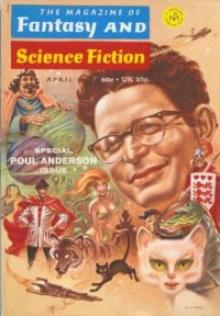 The Queen of Air and Darkness
The Queen of Air and Darkness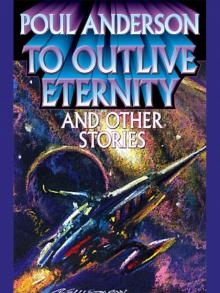 To Outlive Eternity
To Outlive Eternity The Golden Slave
The Golden Slave Dahut
Dahut Captain Flandry: Defender of the Terran Empire
Captain Flandry: Defender of the Terran Empire Un-Man and Other Novellas
Un-Man and Other Novellas David Falkayn: Star Trader (Technic Civlization)
David Falkayn: Star Trader (Technic Civlization)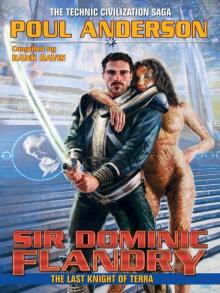 Sir Dominic Flandry: The Last Knight of Terra
Sir Dominic Flandry: The Last Knight of Terra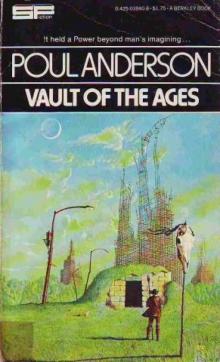 Vault of the Ages
Vault of the Ages The Devil's Game
The Devil's Game A Stone in Heaven df-12
A Stone in Heaven df-12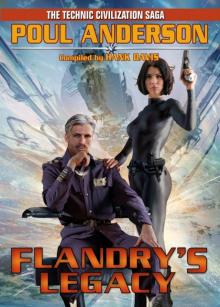 Flandry's Legacy: The Technic Civilization Saga
Flandry's Legacy: The Technic Civilization Saga Harvest the Fire
Harvest the Fire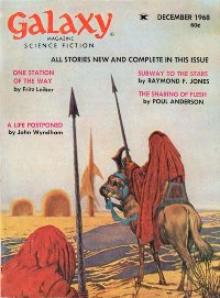 The Sharing of Flesh
The Sharing of Flesh Harvest of Stars
Harvest of Stars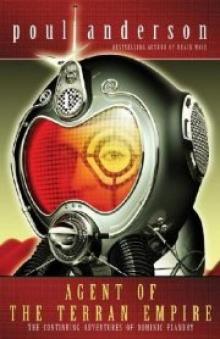 Agent of the Terran Empire
Agent of the Terran Empire World without Stars
World without Stars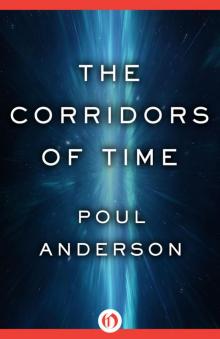 The Corridors of Time
The Corridors of Time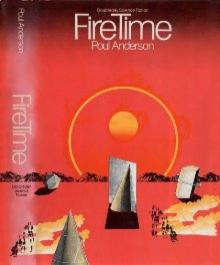 Fire Time gh-2
Fire Time gh-2![The Stars are also Fire - [Harvest the Stars 02] Read online](http://i1.bookreadfree.com/i1/04/01/the_stars_are_also_fire_-_harvest_the_stars_02_preview.jpg) The Stars are also Fire - [Harvest the Stars 02]
The Stars are also Fire - [Harvest the Stars 02] We Have Fed Our Sea
We Have Fed Our Sea Demon of Scattery
Demon of Scattery Rogue Sword
Rogue Sword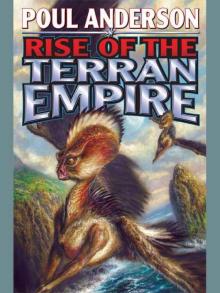 Rise of the Terran Empire
Rise of the Terran Empire The Only Game in Town tp-4
The Only Game in Town tp-4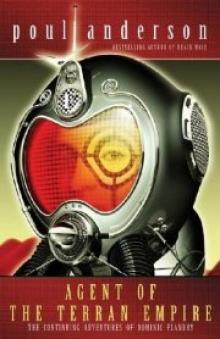 Agent of the Terran Empire df-5
Agent of the Terran Empire df-5 The Day Of Their Return
The Day Of Their Return Brain Wave
Brain Wave The Day of Their Return df-4
The Day of Their Return df-4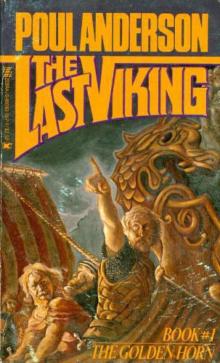 The Golden Horn
The Golden Horn Hrolf Kraki's Saga
Hrolf Kraki's Saga Tau Zero
Tau Zero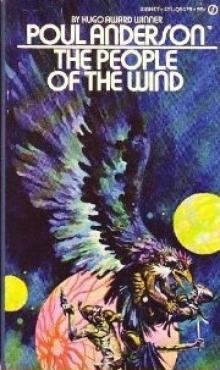 The People of the Wind
The People of the Wind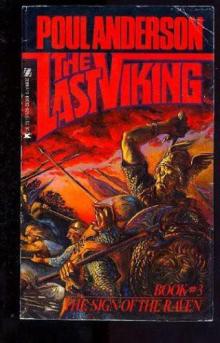 TLV - 03 - The Sign of the Raven
TLV - 03 - The Sign of the Raven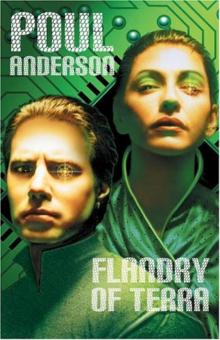 Flandry of Terra df-6
Flandry of Terra df-6 Gibraltar Falls tp-3
Gibraltar Falls tp-3 The Game Of Empire
The Game Of Empire The Road of the Sea Horse
The Road of the Sea Horse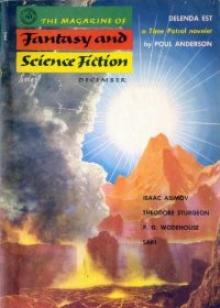 Delenda Est tp-5
Delenda Est tp-5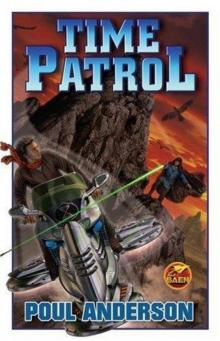 Time Patrol
Time Patrol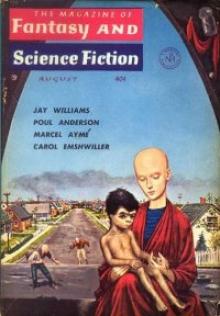 Brave To Be a King tp-2
Brave To Be a King tp-2 The Man Who Counts nvr-1
The Man Who Counts nvr-1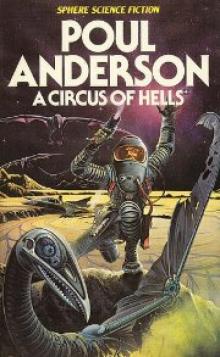 A Circus of Hells df-2
A Circus of Hells df-2 The Rebel Worlds df-3
The Rebel Worlds df-3 The Unicorn Trade
The Unicorn Trade Lord of a Thousand Suns
Lord of a Thousand Suns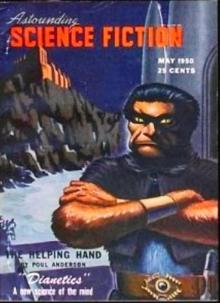 The Helping Hand
The Helping Hand The Shield of Time
The Shield of Time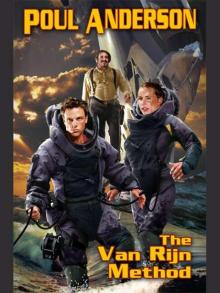 The Van Rijn Method
The Van Rijn Method A Circus of Hells
A Circus of Hells Earthman, Beware! and others
Earthman, Beware! and others Ivory, and Apes, and Peacocks tp-6
Ivory, and Apes, and Peacocks tp-6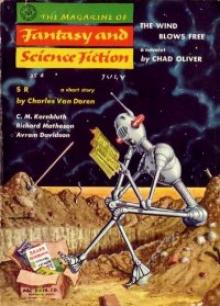 Life Cycle
Life Cycle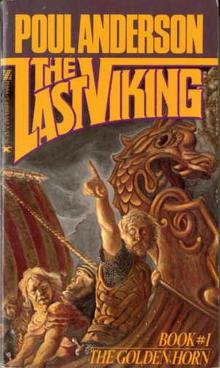 The Last Viking
The Last Viking Roma Mater
Roma Mater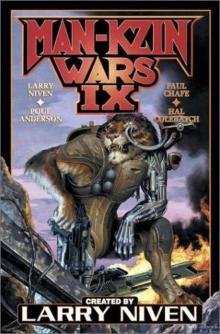 The Man-Kzin Wars 09 mw-9
The Man-Kzin Wars 09 mw-9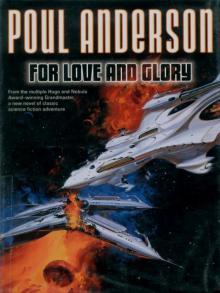 For Love and Glory
For Love and Glory Eutopia
Eutopia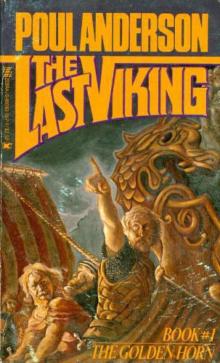 TLV - 01 - The Golden Horn
TLV - 01 - The Golden Horn The Old Phoenix Tavern
The Old Phoenix Tavern The Long Night df-10
The Long Night df-10 The Dog and the Wolf
The Dog and the Wolf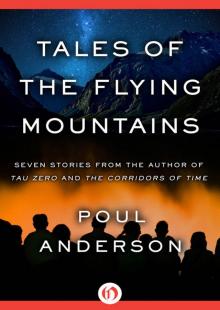 Tales of the Flying Mountains
Tales of the Flying Mountains There Will Be Time
There Will Be Time A Knight of Ghosts and Shadows
A Knight of Ghosts and Shadows Three Hearts and Three Lions
Three Hearts and Three Lions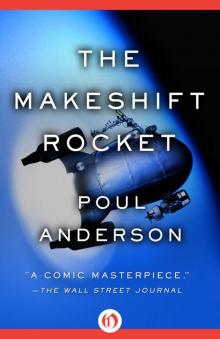 The Makeshift Rocket
The Makeshift Rocket The Dancer from Atlantis
The Dancer from Atlantis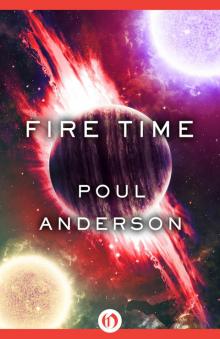 Fire Time
Fire Time